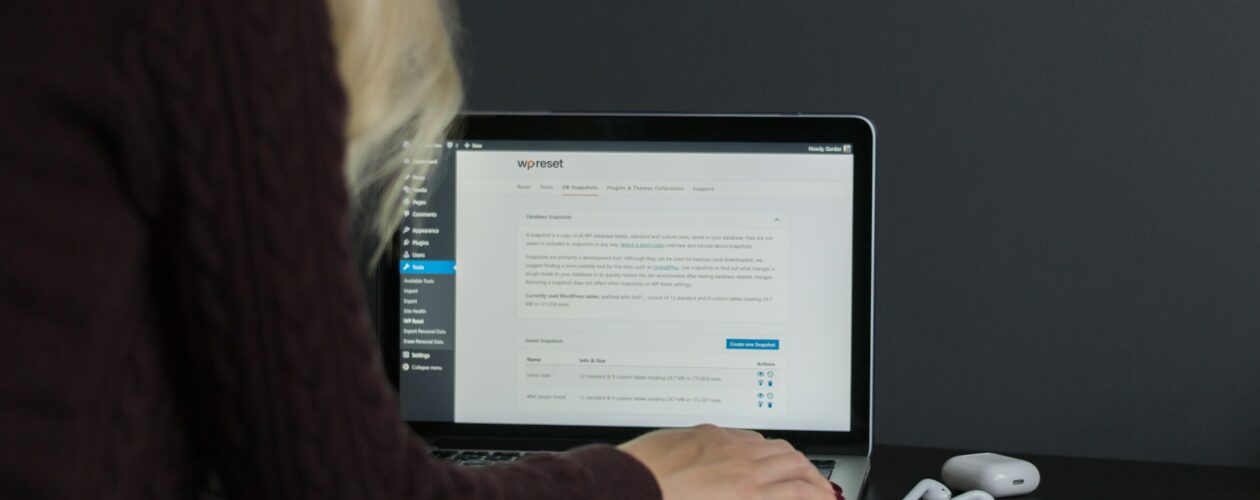Fixing Slow WordPress Sites: Performance Troubleshooting Guide

A slow WordPress site can feel as frustrating as watching paint dry, especially when it holds the potential to drive customers away before they’ve even had a chance to explore what you offer. Website performance doesn’t just affect user satisfaction; it plays a significant role in how search engines rank your site. So, keeping your WordPress site running smoothly is more than just a good idea—it’s a necessity.
Whether you’re running a small blog or a large e-commerce platform, a slow site can be a thorn in your side. Not being able to pinpoint what slows you down can be equally frustrating. Luckily, troubleshooting performance issues can be straightforward. Let’s explore how to tackle these issues head-on and ensure your WordPress site is at its best.
Identify Performance Issues
Spotting what’s bogging down your website is the first step to swift action. Fortunately, a variety of tools out there can help with this. These tools analyse site speed and provide benchmarks, highlighting areas needing attention. Tools such as Google’s PageSpeed Insights or GTmetrix offer insights into areas dragging your performance down.
Several signs indicate your WordPress site isn’t as fast as it should be. Look out for:
– Long load times: Pages taking more than three seconds to load can lead to user frustration and increased bounce rates.
– High bounce rates: Visitors leave after viewing only one page if it loads too slowly.
– Frequent timeouts: If your site often times out, it breaks the user experience.
There are many elements that can slow your site down. Common culprits include:
1. Large Images: Using oversized images without optimisation can drastically slow load times.
2. Excessive Plugins: While plugins add features, too many or improperly configured ones can hinder your site’s pace.
3. Inefficient Coding: Bloated HTML, CSS, or JavaScript files require more time for browsers to process, affecting load speed.
Identifying these issues is like finding the pieces of a puzzle. Once you know what’s out of place, it’s easier to fit everything together. Whether it’s resizing images or cutting back on plugins, understanding the problem is half the battle won. The next step is implementing these small tweaks for a larger impact on site performance.
Optimise Images and Media
Images can make or break your site’s loading speed, which is why optimising them is a smart move. Using the right image formats, like JPEG for photographs and PNG for graphics, can have a big impact on performance. You don’t need to sacrifice quality for speed; compressing images reduces their file size without losing visual quality. This makes pages load faster, improving user experience and engagement.
Another technique to consider is lazy loading. This means that images only load when they’re about to come into view, rather than loading all at once. It cuts down on initial load times, helping your site feel quicker right from the start.
Improve Database Efficiency
Think of your database as the engine under your site’s hood. Keeping it lean can improve your site’s overall performance. Over time, your WordPress database accumulates old revisions, spam comments, and other unnecessary data that can slow things down. Regular clean-ups can keep this from becoming a problem.
Using a plugin designed for database optimisation can be a quick win here. These plugins help in removing unused data, making sure the database only holds what’s needed. Deleting old content drafts and clearing spam comments will also ensure the database runs smoothly, keeping your site operating efficiently.
Minimise CSS and JavaScript
Bloated CSS and JavaScript files are like heavy baggage—they need to be streamlined for a lighter, faster trip. Minification is a straightforward process you can use to remove all unnecessary characters from the code without affecting its functionality. This process makes files leaner and easier for web browsers to handle.
Additionally, combining files can reduce the number of HTTP requests browsers need to make, further improving load times. Harnessing the power of a content delivery network (CDN) can also boost speed. A CDN stores copies of your site at various points around the globe, so users can load your site from the location nearest to them. This means faster loading times regardless of where your audience is.
Summing Up Your WordPress Performance Tenure
Keeping your WordPress site running smoothly requires a watchful eye and regular tune-ups. By optimising images, cleaning the database, and streamlining code, you tackle most of the usual suspects behind slow site speeds. These efforts can significantly enhance how quickly your site loads, creating a better experience for everyone who visits.
Maintaining your site isn’t just a one-time task; it’s an ongoing process. Encouraging these practices ensures your site remains in top condition, offering users a seamless browsing experience. These methods are both effective and practical, providing a strong foundation for anyone looking to optimise their WordPress site’s performance.
Optimising your WordPress site can seem overwhelming, but it doesn’t have to be. With DareToCloud’s WordPress maintenance and optimisation services, you can enjoy a seamless and efficient website experience. Our team is ready to tackle load speed, database efficiency, and more, leaving you free to concentrate on what you do best—growing your business. Discover how we can elevate your site’s performance today!

